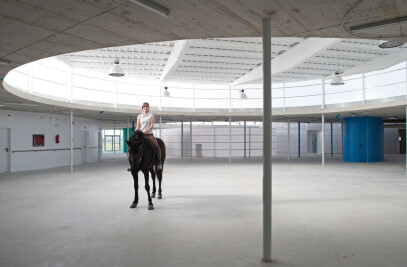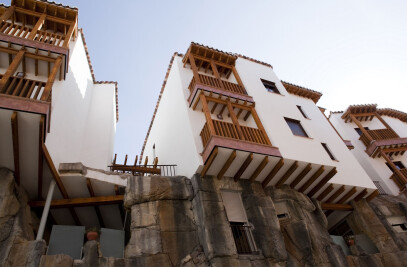Casa Mediterraneo is a diplomatic institution committed to foster the Mediterranean Villages’ common identity. Its new Headquarters are to be set within the old Benalua railway station, in Alicante, for the institution demanded new spaces where to develop a wide range of events, including exhibitions, concerts, shows or parties.
Beyond the programmatic requirements, we could not avoid tackling the following implicit issue: ‘Bearing in mind the preservationist and low budget premises established by the brief,setting our sights beyond the simple embalmment of the building and attempting to carry out a radical-yet-citizen-friendly intervention, how were we to approach Heritage?’
Firstly, dismissing the Modernist excessive testosterone when operating into what could be described as Refurbishment Mode. Secondly, updating and adding straightforward and idiosyncratic ornamental references. And, above all, sophisticating that bold, giant-linear space -formerly devoted to the railway transit- and turning it into a public, experiential space.
Thus, and after pre-scanning the building in order to highlight its valuable features, as well as to detect and get rid of the fat surplus once and for all, the intervention could focus on incorporating new properties to the interior spaces.
The former platform hall is the main space of the building. A 1500 sqm, longitudinal space is intended to become an experience hall. By means of the ubiquitous Mediterranean Sun and some additional technical interventions -such as the introduction of a variety of hanging elements, including a ø7m ceiling fan- its spatial properties evolve. An unused, rusty, dark and dryspace becomes blue, excited, liquid, vibrant, unstable, overflowing, zenithal, rythmic, programmable, thermodynamic and profitable.**
AKlein-blue, translucent roof filters the incoming sunlight which, after reverberating through a vibrant, circular-patterned alluminium lattice, dyes and excites the old walls and floor, flooding the space and turning it into a sea of blue shadows.
The conventional programme is fitted into an array of small pavillions scattered along the perimetral aisles. These are equipped and climatized, and enable any eventual worker or onlooker to enjoy and understand the original structure and space. The rest of the building is not climatized. Though sheltered, the spaces are not closed, allowing a constant flow of fresh air inside. The floors are cast of compact sand, and the gardening is distributed in glossy ceramic pots.
The result is a new occupation and transformation protocol for Heritage buildings. A new scenario in which the old buildings and the citizens empathize, feeding the flame of memory while avoiding any nostalgic concession.

































